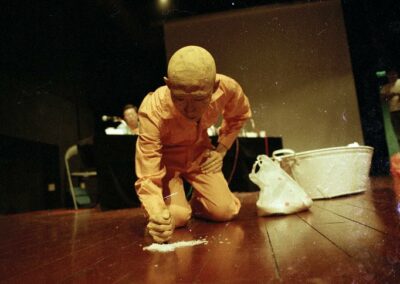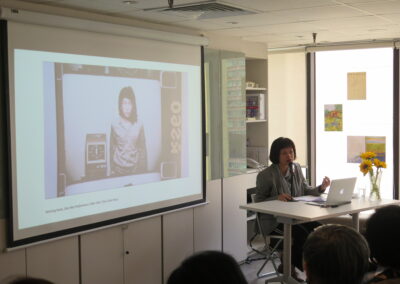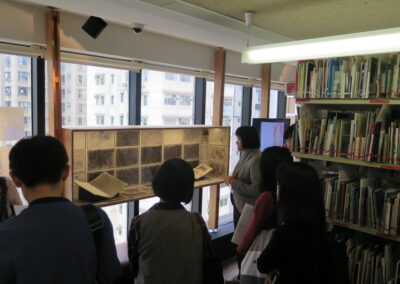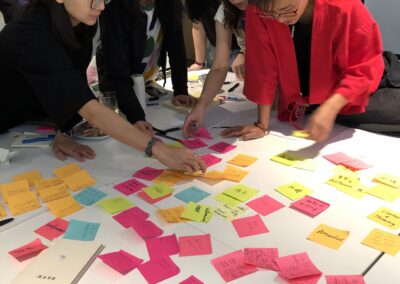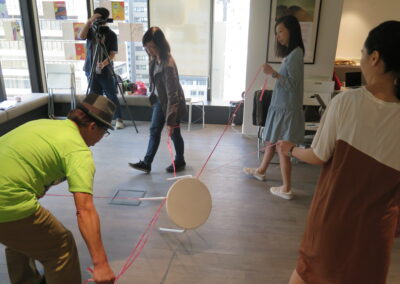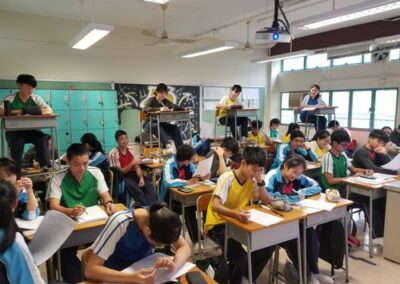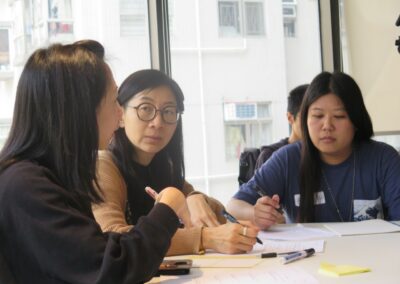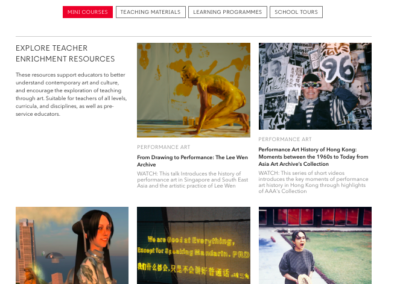Teaching Labs and Online Resources – A case study on teaching performance art in Hong Kong
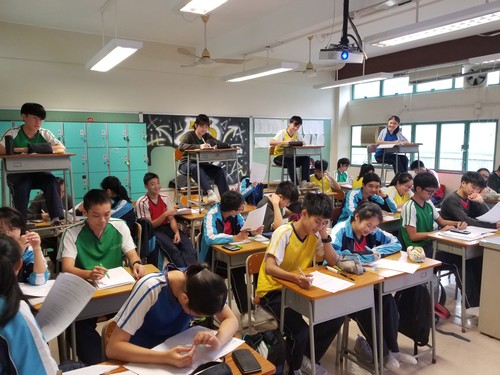
CATEGORY
Accessibility | Diversity/ Inclusion | Participation | SustainabilityYEAR
2019-20DURATION
2019-20LOCATION
OnsiteFORMAT
A talk and a workshop, with online materials including videos and handouts.WEBSITE
https://aaa.org.hk/en/programmes/programmes/teaching-labsTARGET
Asia Art Archive (AAA) aims to support educators by:
1) Expanding educators’ knowledge of contemporary art by introducing less visible histories and development in Asia;
2) Connecting contextual knowledge from AAA’s collection with artistic practices;
3) Encouraging educators to implement this knowledge and develop meaningful connection with their students;
4) Providing a platform to access enrichment resources for teachers, along with lesson plans shared by teachers for teachers.Overview of Hong Kong Art Education
The new senior secondary visual arts curriculum has been implemented in Hong Kong since 2009, which has challenged teachers to move beyond the studio-focused approach to explore new teaching methodologies to facilitate a more holistic way of learning. The new curriculum and assessment require students to demonstrate the ability of art writing (appreciation and criticism) and art-making, with competence to critically analyse and reflect on art from a broad cultural and historical context, and relate it with personal experiences and reflection through artistic expression. Contemporary art provides different perspectives to society today that enrich students’ understanding of the world. However, there is a lack of relevant teaching materials for contemporary art education in the classroom. Educators find it difficult to access discourses around contemporary art, as well as a suitable pedagogy to facilitate students’ learning.
Learning & Participation
In response to the needs of the educator community, AAA established the Learning and Participation Department (L&P) in 2009 to expand what is taught in the classrooms. Our mission is to build a supportive platform that provides professional development programmes and develops teaching resources for educators. We activate AAA’s collection of materials of contemporary art in Asia to draw meaningful connections between historical contexts, artistic practices, and current needs in education. This expansion of pedagogical possibilities encourages educators to develop a spirit of experimentation, and hopefully extend this spirit to their students. We hope that our educators can help students to reflect and recognise challenges in their everyday life, society, and the world through learning and practising contemporary art.
Teaching Labs and Online Resources – A case study on teaching performance art in Hong Kong
To realize our goals, AAA has worked with researchers and artist-educators to develop the Teaching Labs Series, an annual professional development programme that invites teachers to innovate new ways to teach and study contemporary art. It is a two-day programme which consists of a public talk by AAA researchers and a hands-on workshop led by artist-educators. By exploring multiple histories and cultural perspectives, as well as unveiling artistic practices and pedagogies in the collections, Teaching Labs expands the educators’ knowledge of contemporary art and facilitate them to implement these learnings into a classroom setting. Following the Teaching Labs, online resources developed from the programme are published on AAA’s website to consolidate educators’ learning, which includes mini courses and teaching materials.
The Teaching Labs series in 2019 focused on performance art. Performance art is a unique form of expression as it adopts a non-traditional, embodied and de-materialized approach. Yet, the performance art appears to be “mystifying” for educators and local students. Furthermore, as performance art is being associated with social and political issues, educators have expressed their difficulties to teach performance art in classrooms for its sensitivity.
To ease the conception of performance art among educators and students, L&P used the Archive of Lee Wen, a Singapore-based performance artist as a point of departure and developed Teaching Lab series and Online Resources to explore innovative ways of teaching and practising performance art.
LINKS
FILES
AUDIO





